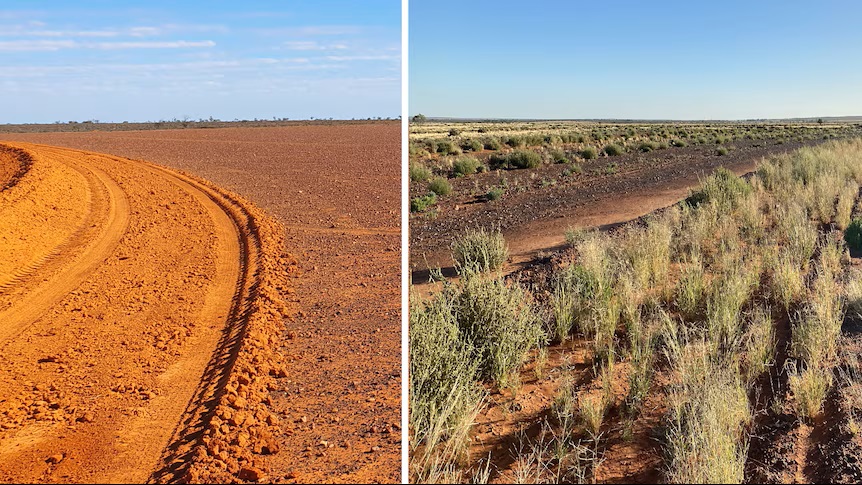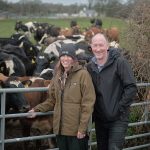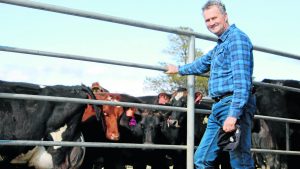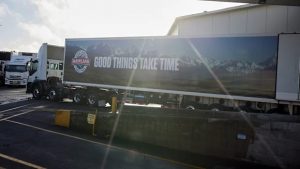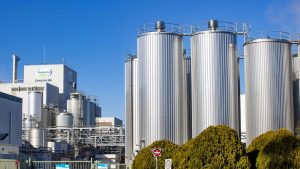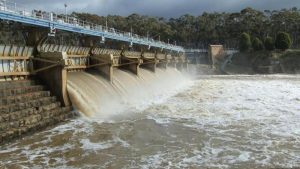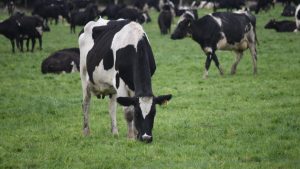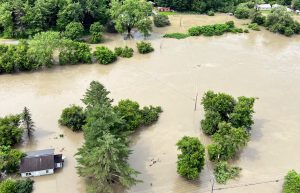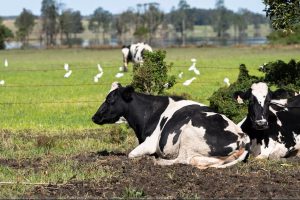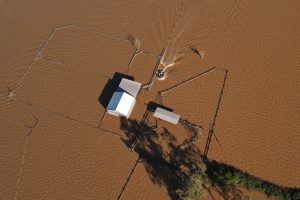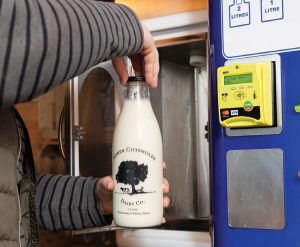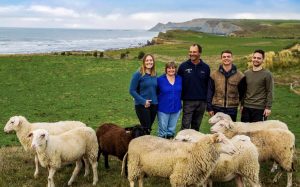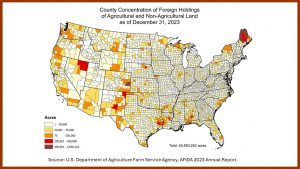
Pastoralists in the far west of NSW are trialling new ways to capture rain to manage arid landscapes.
The group is working with Local Land Services NSW at a remote station to see if they can re-introduce native seed.
Information about the demonstration site will feature at an upcoming international rangelands conference in Adelaide in June.
While many farmers are continuing to wait for rain during record-dry conditions, some in the far west of New South Wales are focused on being rain-ready.
As part of the Perennial Pastures Resilient Rangelands project, a small group of farmers are working with Local Land Services NSW at a site on a remote station north of White Cliffs to see if they can re-introduce native seed.
Ecologist Hugh Pringle worked with the group and said rangelands were severely degraded after a century of poor administration and management.
Banks to create ponds were made first in July 2023 at the rangeland rehabilitation site. (Supplied: Local Land Services)
“Rangelands are rangelands because the rainfall is low and unpredictable, and rainfall drives the whole system,” Dr Pringle said.
“So if you’re wasting raindrops in an arid system, you’ve got no chance of running a primary production business.”
Local Land Services senior land services officer Paul Theakston said the pastoralists had come up with a plan to slow the water down when it rained and make it meander through the landscape, rather than just rush off and create gully heads.
Local Land Services rangelands rehabilitation officer Paul Theakston at Yalda Downs. (ABC Broken Hill: Katherine Spackman)
“This area that we’re looking at was fairly degraded in terms of very low ground cover,” he said.
“The water would just sheet off and there was no real infiltration of that water.”
The demonstration site was created about two years ago on an 80 hectare site at Yalda Downs, 85 kilometres north of White Cliffs.
Using a grader, a series of banks about 150 metres long was made to create water ponds.
Initial results from rangeland rehabilitation at Yalda Downs station is positive. (Supplied: Local Land Services )
“They pond water to a depth of about 8 centimetres, and then they release that water into the next pond to an 8 centimetre depth, and it just continually does that,” Mr Theakston said.
About 13 kilograms of native seed was sourced and sowed across the area, which was a difficult and expensive exercise.
Native seed was applied to the rangeland site. (Supplied: Local Land Services)
Ten different species of perennial grasses and shrubs were chosen, including windmill grass Chloris truncata and native millet Panicum decompositum.
While dry times have hit, Local Land Services hopes with ongoing monitoring it might see more results from the various regeneration treatments.
Yalda Downs’ Richard Wilson, who hosted the demonstration site on his property, said they were already pleased with the results.
Richard Wilson at the Yalda Downs demonstration site. (ABC Broken Hill: Katherine Spackman)
“The thing that we’re trying to fine tune is the most effective small changes in building the ponds — ripping, the height of the ponds — and a whole range of different things including seeding, like we did, and excluding stock to see what partial management and grazing management can do,” he said.
The work the group has been doing will form part of a poster presentation at an upcoming international rangelands conference in Adelaide.
“We are keen to publicise the outcomes of these trials because there has been very little done in the past in outback NSW,” Mr Wilson said.
Regeneration strong in far west
Originally from Zimbabwe, Dr Pringle has been working in pastoral regeneration in Australia for the past 25 years.
He said the energy of local pastoralists when it came to rangeland rehabilitation was “mind-blowing”.
He has been working with pastoralists in the region since 2016, using the ecosystem management understanding (EMU) tool he developed with colleague Ken Tinley.
Hugh Pringle splits his time between White Cliffs and Africa. (ABC Broken Hill: Katherine Spackman)
They first developed their EMU approach in the Gascoyne and Murchison regions in Western Australia, and estimated they had worked with more than 1,000 people across Australia.
Their unique approach is that they see farmers as knowledge holders and then apply their own holistic ecological knowledge.
He said the method had come as a result of their early work in Africa when they did not have many resources.
“[We didn’t have] all these nice tools we’ve got today. ‘I’ll just go sit down with the local tribal people and talk to them and learn from them and get the answers to all the questions I have,'” he said.
Today Dr Pringle divides his time between White Cliffs and Namibia in Africa, where he supervises doctoral students while performing similar regenerative work.
The Perennial Pastures Resilient Rangelands project is supported by Local Land Services through funding from the federal Future Drought Fund.
You can now read the most important #news on #eDairyNews #Whatsapp channels!!!
🇺🇸 eDairy News INGLÊS: https://whatsapp.com/channel/0029VaKsjzGDTkJyIN6hcP1K
